Mountain ranges, mountain peaks and volcanoes have always intrigued humans - they wondered how they were created, when lava would erupt from them and how the fertile soil in the volcanic environment could be utilized. Get your backpacks ready, let's go climbing!
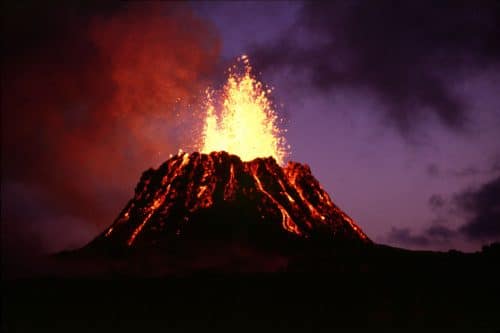
Written by: Ariel Kers, Young Galileo
As a child, my father told me about volcanoes, how they form and how they work. The hot lava flowing unstoppable, the flying rocks, the ash and the smoke - the fury of nature - on the one hand scared me a little and on the other hand fascinated me a lot. I liked to open the atlas or the encyclopedia (when I was a child there was no Google yet) to also read about the "normal" mountains - the high rocky mountains with forests, deep snow and glaciers.
I began to understand how the mountains are formed, what the weather is like around them and how they affect the world and man. All this made me want to travel to mountainous regions. Israel does not have many high mountains and there are no active volcanoes at all. To reach a high altitude or an active volcanic area we need to fly to Europe for example.
The mountain that dominates the island
A few months ago I went to the island of Sicily in southern Italy to visit a mountain I had heard a lot about - Mount Etna. Etna is a huge active volcano with two craters at a height of about 3,300 meters. He towers over his surroundings - the northeast of the large island of Sicily, and dominates it in every respect.
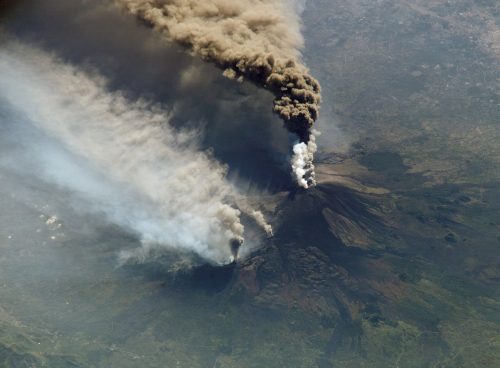
Usually, Etna is a calm mountain that is "under control", as the Italians say, meaning that its activity can be observed and predicted, and the energy it contains is released in a uniform and moderate release. That is why people are not afraid of the mountain, and in the settlements around it live about a million people, who cultivate the lands rich in minerals that it has released over the years. However, at times the eruption erupts on its own tremendously and causes great destruction. Seismic activity in the mountain area sometimes causes devastating earthquakes.
We went up the mountain with a guide who took us in a "snow cat" - a tracked vehicle adapted to the terrain conditions. Up there (at an altitude of about 3,000 meters) it was very cold and snowy, and the guide led us to a lava flow that flowed from the mountain; The lava flow was hot and warmed us well. The sight of the black lava flowing slowly with the surrounding white snow, the hot vapors rising to the sky and the mountain peaks above that constantly emit smoke and steam from their mouths - is a spectacular and unforgettable sight.
How are mountains formed?
Most of the mountains in the world are not isolated like Etna, but part of a range, and they are not formed by repeated volcanic eruptions but by bending processes created by tectonic activity (more on that later). The mighty and highest mountain ranges in the world, such as the Himalayas, the Andes, the Caucasus, the Alps and a large part of the Rocky Mountains in North America, were formed in this way. Some of them are still "young" and they continue to rise to the top.
Volcanoes like Etna are formed due to volcanic activity. When there is a fissure or crack in the earth's crust, magma (molten and hot rock) erupts from it and is ejected to the surface in a volcanic eruption. The materials emitted from the volcano create it and its environment, and for that reason the changes in it (altitude, soil conditions, vegetation, etc.) may be much faster than the changes in "normal" mountains.
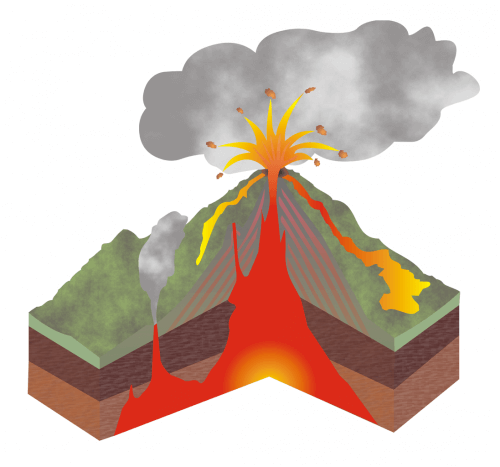
There are also mountains that are formed by weathering: an ancient plateau is dissected by the passage of rivers or glaciers along lines of weakness, such as cracks or meeting points between soils and rocks of different types. After millions of years of activity, steep canyons are formed between isolated mountains that look like "islands". Sometimes such mountains have a flat top, and are called "table mountains".
creation and attrition
As mentioned, most of the mountains in the world are created by tectonic activity, that is, the movement of the giant plates of the Earth's crust from place to place. The Earth's crust is not uniform but consists of a "puzzle" of plates that are in constant motion relative to each other. The plates of the earth's crust move and "float" on the surface of the viscous mantle beneath them.
There are nine main tectonic plates on Earth and many smaller ones, which extend under the continents and oceans and move very slowly, but over the course of millions of years they form, among other things, mountains. The movement of the plates - between half a centimeter and eight centimeters a year - wrinkles and folds the Earth's crust. The folds and folds of the mantle are the mountains that are so impressive.
When one tectonic plate "collides" with another and pushes it, mountain chains are formed such as the mighty Himalayas, which were formed by the collision of the Indian plate, on which India is located, with the Eurasian plate. Another example is the Andes Mountains in South America, which were formed by the collision of the Nazca Plate with the South American Plate. Mountains like the Himalayas and the Andes are considered "young" mountains, which are still in the stages of formation and are rising. Their shape is jagged, with lots of towering peaks that look like sharp cones and terrifying cliffs.
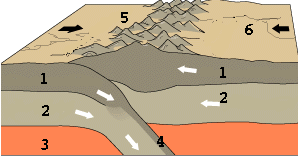
But over the years the mountains begin to wear down. The forces of nature act on them and change their shape. The plants growing on them turn the rocks into soil. The frost slowly disintegrates the rocks. The wind and water wear them away. If the mountains are very high, glaciers form on them - huge rivers of ice, and these sand the rocks on their way down.
The mountains in the deserts are not particularly affected by the little vegetation, but they are subject to the effect of accidental floods as well as the large temperature differences between the hot days and the cold nights. During the day the rock surface heats up and expands, and at night they contract under the influence of the cold and crack. A wind that carries grains of dust and sand - an almost daily occurrence in the desert - sands and erodes the rocks of the mountains. "Old" mountains, which have existed for tens of millions of years and are subject to constant erosion, are much less angular than the young mountains. They are lower and their shape is soft and round. This is what most of the mountains in Israel look like.
The mountains and the man
Although we love the mountains, the mountainous environment is not particularly friendly to the daily activities of humans. Man mines the mountains for construction quarries such as stone, marble and gravel, but it is difficult to build large settlements and roads or railroads in the mountains, and it is difficult to cultivate the soil of the steep and rocky slopes. That is why most mountain settlements are small villages, and their fields are often located on mountain steps and terraces.
The mountains also affect the weather. In Israel, the mountains in the center of the country separate the relatively rainy coastal plain from the hot Judean Desert, which is in the "rain shadow", meaning that almost all the rain that comes from the west falls on the western side of the mountains, and does not reach the eastern side.
Because of the great influence of the mountains on the weather and the environment, they often dictate the form of human settlement, his ability to sustain agriculture and his livelihood. Much more than agriculture and industry, the mountains are suitable for people as resorts and sports: they have clean air, beautiful forests, ski resorts, streams and lakes, hiking trails and spectacular views.
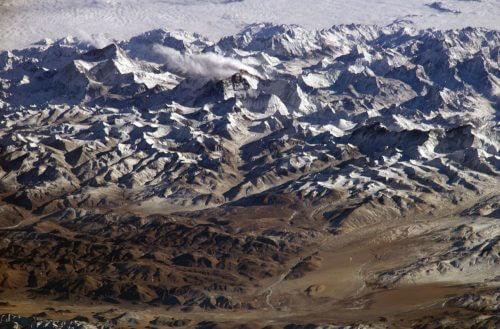
Mount Etna is a particularly popular tourist site. The tourists come to see the lava flows and the volcanic activity, to walk in the paths and forests, to enjoy the views of the plains and the Mediterranean Sea, to look for the spectacular lava caves, to ski on the snow and to taste the fruits of the mountain, whose fine soil grows the best produce of the island of Sicily.
Large mountain ranges are a natural barrier that separates parts of continents, and until recently it was very difficult for man to cross them. This is why many mountain ranges are a border line between countries or between peoples. For example, the Himalayan range separates India from China, and the Pyrenees range separates Spain from France.
Mountains are also a natural barrier for plants and animals, so in some regions of the world mountain ranges separate completely different environments and habitats, for example the Alps in Europe, which separate the Mediterranean region from the temperate region. And if this article made you interested in mountains, ask your parents to take you on a trip to one of Israel's most beautiful mountains or one of the mountain resorts in the world.
The alpinists
We all like to experiment with climbing walls and reach the top, but some people are not satisfied with climbing walls or hiking in the mountains and climbing on the rocks. These are the alpinists - the professional mountain climbers who got their name from the Alps in Europe.
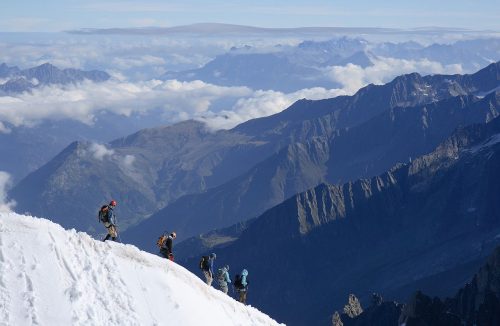
Alpinists want to conquer the highest mountains in the world and climb to their summit. This is of course a complex, expensive and extremely dangerous task. The modern history of mountain climbing began with the conquest of Mont Blanc, the highest peak in the Alps, in August 1786. Later, all the peaks of the Alps were conquered, and in 1953, Everest was conquered, which is the highest mountain in the world (8,848 meters above sea level) and is in the Himalayas.
Alpinists face difficult challenges physically and mentally: storms, avalanches, insurmountable obstacles, lack of oxygen and more. But according to them, the experience of conquering the peak of a snowy mountain is a one-of-a-kind experience.
There are mountains that even the most daring and skilled alpinists have difficulty climbing, for example due to their steepness. One of them is Anpurna 1 in the Himalayas. The height of the mountain is 8,091 meters, only 157 people have tried to climb it to date, and sixty of them have been killed, so Anaforna 1 is probably the most dangerous mountain in the world.
K2, also known as Goodwin-Austen Peak, is a massive rock pyramid in the remote Karakoram Range, on the border of China and Pakistan. Its height is 2 meters (the second highest mountain in the world), and it is extremely difficult - and perhaps even impossible - to climb it.
Another dangerous mountain is the Eiger, in the Swiss Alps. Its height is "only" 3,970 meters, but its northern side is a huge and extremely dangerous vertical cliff, which earned it the nickname "Death Wall". Do not try it yourself!
Did you know?
The most daring mountain climber of all is the Italian adventurer Reinhold Messner. Messner was the first to climb all the 8,000 meter peaks (all in the Himalayan and Karakoram ranges) between 1970 and 1986. His superhuman ability allowed him to climb to the top of Everest alone, without oxygen cylinders!
The article was published in Young Galileo - the monthly for curious children. For a gift digital sheet Click

One response
If I'm 25, do you still recommend asking my parents to take me on a trip?
Very interesting, thanks 🙂